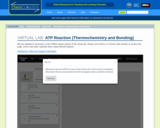
Determine the enthalpy of the ATP reaction.
- Subject:
- Chemistry
- Physical Science
- Material Type:
- Activity/Lab
- Provider:
- Carnegie Mellon University
- Provider Set:
- The ChemCollective
- Date Added:
- 02/05/2021

Determine the enthalpy of the ATP reaction.

In this part of the MRE scenario, students measure the enthalpy of a reaction.
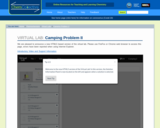
In this part of the MRE scenario, students determine change in the enthalpy of a reaction as the concentration of reactants are varied.
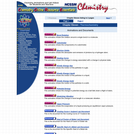
This collection of videos, animations and documents comes from the NCSSM AP chemistry online course. Chapter eleven provides practice and demonstrations related to thermochemistry.
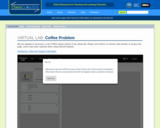
Use the virtual lab to determine how much milk to add to hot coffee to reach the desired temperature

As an analytical chemist at a company developing new engine coolants your task is to determine the heat capacity of a newly developed product and then to determine if its heat capacity is greater of less than that of ethylene glycol.

This class focuses on chemical rocket propulsion systems for launch, orbital, and interplanetary flight. It studies the modeling of solid, liquid-bipropellant, and hybrid rocket engines. Thermochemistry, prediction of specific impulse, and nozzle flows including real gas and kinetic effects will also be covered. Other topics to be covered include structural constraints, propellant feed systems, turbopumps, and combustion processes in solid, liquid, and hybrid rockets.
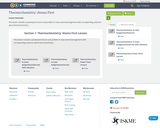
This lesson includes a powerpoint lecture and problem in-class exercise/assignment with corresponding solutions about thermochemistry.
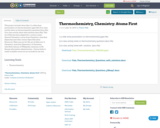
This project includes three files: 1) a slide show presentation on thermochemistry (pptx file) 2) in-class activity sheet on thermochemistry questions (docx file) 3) in-class activity sheet with solutions (docx file). This set of files has been adapted for a science-major General Chemistry course from Chemistry: atom first (Openstax) and other various Open Education Resources. Main sources for this set of slides are: 1) Chemistry: atom first (Openstax ); 2) Chemistry LibreTexts Library; 3) Wikipedia commons; 4) US- Energy information administration.. Various links to online available resources are included in the text.

This subject deals primarily with equilibrium properties of macroscopic and microscopic systems, basic thermodynamics, chemical equilibrium of reactions in gas and solution phase, and macromolecular interactions.